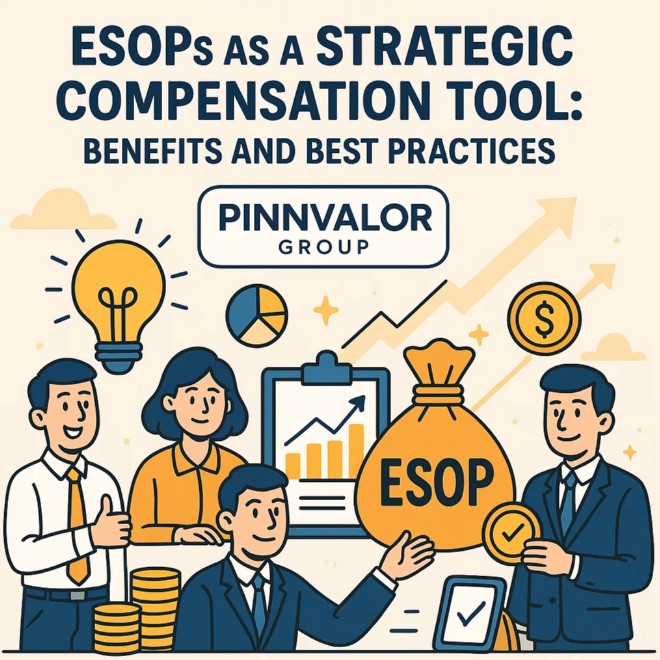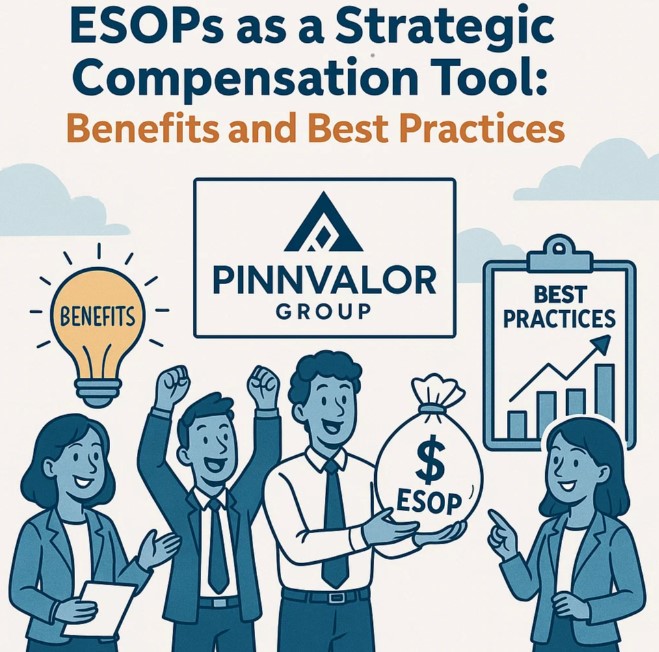
ESOPs as a Strategic Compensation Tool: Benefits and Best Practices
In the modern corporate world, attracting, retaining, and motivating talented employees is a critical factor for business success. Companies are increasingly turning to innovative compensation strategies that go beyond traditional salaries and bonuses. One such powerful tool is the Employee Stock Ownership Plan (ESOP) — a program that grants employees ownership interest in the company through stock shares.
In this blog, we will explore why ESOPs are becoming a strategic compensation tool for organizations, highlight their key benefits, and share best practices for effectively implementing ESOPs.
Are you leveraging ESOPs to align your team’s goals with your business vision?
Offering stock ownership empowers employees to think long-term. It’s not just about a paycheck—it’s about building wealth and a future together with the company.
What Are ESOPs?
An Employee Stock Ownership Plan (ESOP) is a qualified, defined-contribution employee benefit plan designed to provide workers with an ownership interest in the company. Typically, companies allocate shares to employees’ accounts, which they can own after fulfilling certain vesting requirements. ESOPs align employees’ financial interests with the company’s growth and performance.
Why Use ESOPs as a Strategic Compensation Tool?
Traditional compensation models, mainly salary and bonuses, sometimes fall short in incentivizing employees to contribute beyond their basic job duties. ESOPs add a new dimension by turning employees into stakeholders, making them active participants in the company’s future success. This approach:
- Encourages long-term commitment and loyalty
- Enhances motivation and productivity
- Bridges gaps between employee and shareholder interests
- Offers a tax-efficient benefit to both employees and employers
Key Benefits of ESOPs
1. Aligning Employee and Company Goals
When employees own stock in the company, they naturally become more invested in its success. This alignment drives them to work smarter, innovate, and focus on long-term results.
2. Boosting Employee Retention and Loyalty
ESOPs typically have vesting schedules that encourage employees to stay with the company longer. Knowing that ownership stakes grow over time creates a powerful retention tool.
3. Improving Company Performance
Research shows that companies with employee ownership often outperform their peers. The increased engagement and sense of ownership tend to translate into higher productivity and better business results.
4. Tax Advantages
For companies, contributions to ESOPs are often tax-deductible, which can improve cash flow. Employees also benefit from deferred taxes on stock gains until they sell their shares, depending on jurisdiction.
5. Enhancing Recruitment
Offering equity through ESOPs is attractive to prospective employees, especially in startups and growing firms where cash resources may be limited.

Best Practices for Implementing ESOPs
1. Clear Communication and Education
Employees must understand what ESOPs are, how they work, and their benefits. Regular education sessions and transparent communication build trust and enthusiasm around the plan.
2. Design a Fair and Motivating Vesting Schedule
Create vesting terms that reward loyalty but also balance business needs. Typical schedules range from 3 to 5 years, encouraging employees to stay engaged.
3. Align ESOPs with Business Goals
Tailor the plan to reflect company culture and strategic objectives. For example, linking stock allocations with performance metrics can further motivate employees.
4. Ensure Legal and Financial Compliance
Work with legal and financial experts to set up the ESOP in compliance with relevant laws and regulations. Proper documentation protects both the company and employees.
5. Regular Plan Review and Adaptation
Business conditions change, so revisit the ESOP periodically to ensure it remains effective and aligned with company priorities.
Challenges to Consider
While ESOPs offer many benefits, companies should be aware of potential challenges such as:
- Complexity in administration and compliance
- Dilution of existing shareholders’ equity
- Potential for stock price volatility affecting employee morale
Proper planning and expert guidance can help mitigate these issues.
Conclusion
ESOPs are more than just an employee benefit—they are a strategic compensation tool that can transform company culture, enhance employee engagement, and drive sustainable growth. By offering employees a stake in the company, businesses create a motivated, loyal workforce invested in shared success. With thoughtful design and implementation, ESOPs can be a win-win for both employers and employees.
If you are considering ESOPs for your organization, prioritize clear communication, align plans with business goals, and seek expert advice to maximize their impact.
